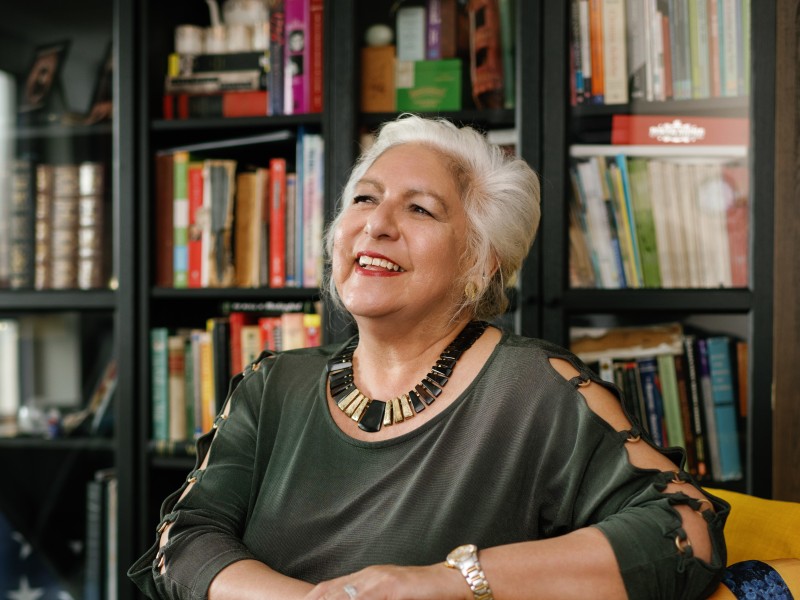Decoding affordable housing: the trouble with aging in Massachusetts

This is the third post in our series on decoding affordable housing. In the first, we broke down key terms and trends that will help you be a part of this important national conversation. In our second, we outlined housing options for older adults and the ways in which income and physical and mental health status affect choice.
Here, we take a look specifically at affordable senior housing in Massachusetts, including how it compares to other states.
Seniors’ income
According to U.S. Census data, the median household income for seniors in Massachusetts is $64,818 for a two-person household and $29,740 for a single-person household. (Source: Income by Zipcode) However, circumstances vary widely. For example, 41% of senior renter households in Massachusetts are currently in the extremely low income income category — in other words, they have incomes between 0% and 30% of the area median income. (Source: National Low Income Housing Coalition) Senior incomes are also mostly fixed, so what was once affordable can become unaffordable over time as the cost of living increases.
Let’s take a minute to think about Social Security. In a 2024 survey, 27 percent of respondents reported that Social Security constituted their entire income. Two-thirds said it made up half of their income. (Source: The Citizens League)
There is also a limit to the Social Security benefit you can receive, which varies based on the age you retire and begin claiming benefits. For example, if you retire in 2025 at age 62, the earliest point you can draw benefits, your maximum benefit would be $2,831. If you’ve reached full retirement age (67 for individuals born in 1960 or later), the maximum would grow to $4,018. If you can afford to wait until age 70, your maximum benefit would be $5,108. (Source: Social Security Administration)
However, you may not qualify for the maximum, which is calculated based on your average indexed monthly earnings during your 35 highest-earning years and adjusted for inflation. According to December 2023 data, $2,003 per month is the average benefit payment that a senior in Massachusetts receives, with the median monthly payment a slightly lower $1,946. (Source: CNBC)
Doing some quick math, that’s roughly a third of Massachusetts seniors who are trying to get by on around $24,000 a year. (Note that the median income for 2Life’s residents living in income-restricted apartments is actually only about $14,000.) Now, how much do they actually need?
Seniors’ expenses
Whether they live alone or as a couple, senior renters in Massachusetts need more income than they do in any other state to live independently, according to something called the Elder Index. The Gerontology Institute at UMass Boston publishes the index to provide “a measure of the income that older adults need to meet their basic needs and age in place with dignity.”
Let’s start with housing, as it’s typically the top household budget item. According to April 2025 data, the average monthly rent in Massachusetts for a one-bedroom apartment is $2,515, making it the second most expensive rent by state. In Boston, this climbs to $3,478 per month. (Source: Apartments.com)
However, housing is certainly not the only factor making Massachusetts an expensive place to live. Overall, the state has the second highest cost of living, second only to Hawaii. Other budget categories — utilities, food, healthcare, transportation, and goods and services — typically also rank higher than elsewhere.
Keep in mind that when seniors need more care support, expenses quickly rise. Massachusetts has some of the highest costs for assisted living, nursing homes, and in-home care. Annual costs for assisted living is $85,440, for nursing homes is $164,240 for a semi-private room or $175,200 for a private room, and $86,944 for in-home care. Memory care adds to costs in general. (Source: Where You Live Matters)
So, how much do you actually need to cover your expenses when you retire in Massachusetts? The short answer is that it depends on a lot of factors. Just by way of a ballpark, one personal financing website puts the estimate at $85,571, which would mean you’d need a minimum of $1.6 million in the bank to fund 25 years of retirement and $1.9 million to fund 30 years. (Source: Unbiased)
Available support
Clearly, a large percentage of seniors need some type of support to live in the state to close the gap between what they have and what they need. However, similar to trends at the national level, far more Massachusetts households are eligible than actually receive support. For example, the Massachusetts Rental Voucher Program (MRVP) is the largest state-funded voucher program in the country. A 2022 study found that the program was serving fewer than 10,000 households although an estimated 585,000 individuals and families were eligible for state and federal housing assistance. Of the one-person households that would qualify for MRVP, half were seniors. (Source: A Right to Rental Assistance in Massachusetts)
As seniors age and require more care, nursing homes are often the only affordable option because of financial support from MassHealth, the state’s Medicaid program. However, despite growth in the senior population, nursing home closures in New England have outpaced closures in all other Medicaid regions, largely due to insufficient Medicaid reimbursement rates but also affected by staffing shortages. (Source: Federal Reserve Bank of Boston) This, in turn, is limiting care options for the lowest income and most frail.
Coming up …
Right now, 16.2% of the Massachusetts population is considered senior, solidly in the middle of the pack looking across all states. (Source: World Population Review) However, the number of Massachusetts seniors is expected to increase 50% over two decades, from 14% in 2010 to 21% of the total population in 2030, reflecting an overall increase in the senior population nationwide. (Source: UMass Donahue Institute) The need to find ways to make living in Massachusetts easier for our elders has never been more urgent.
Perhaps because it faces some of the most intense housing challenges in the country, the good is that the state is also home to some of the most successful housing innovations. In our next blog, we’ll take a look at how 2Life is tackling some of these challenges.


